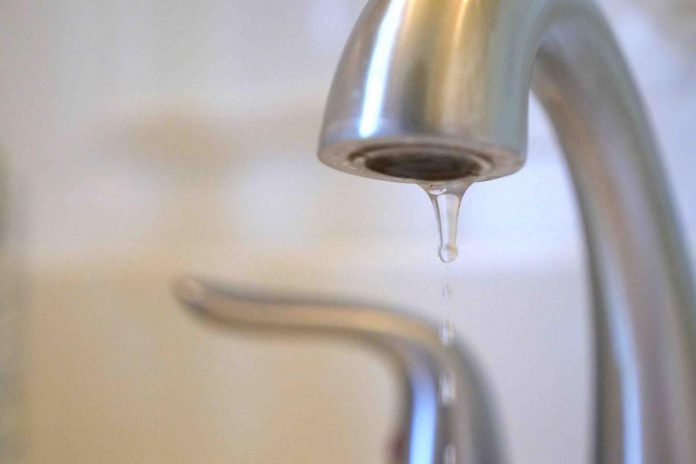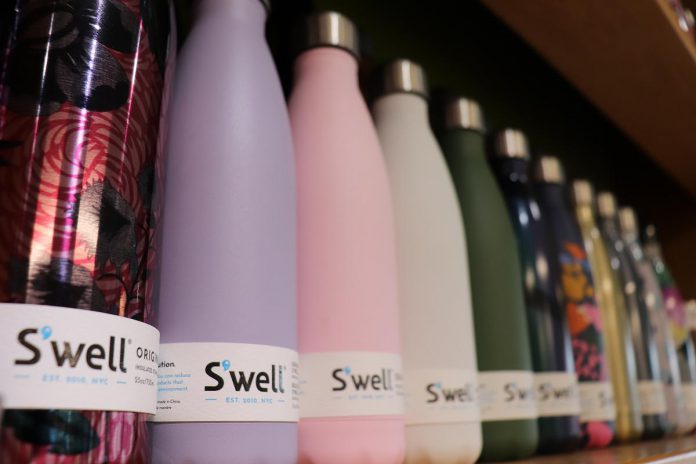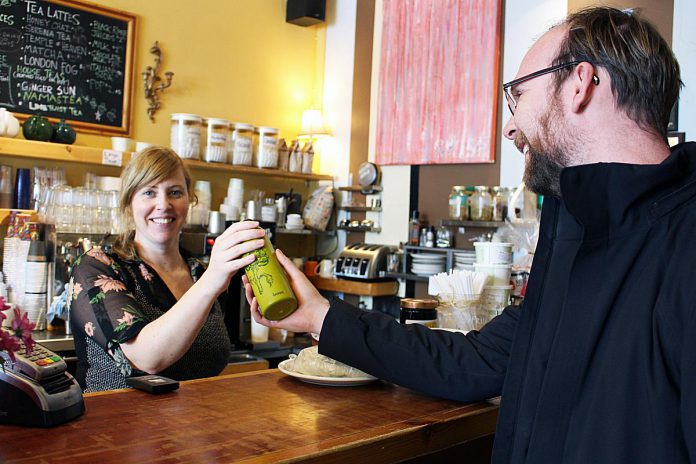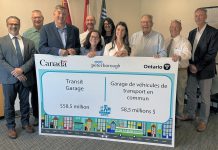
Drinking water, for many Peterborough residents, comes from the tap. The source of this tap water is our treasured Otonabee river.
But many people get their drinking water from grocery and convenience stores. In 2022, according to Statista, it was forecast that Canadians spent $6.09 billion dollars on bottled water.
Bottled water is a major environmental issue related to climate change and plastic pollution. In 2023, we witness stressors regarding the rising cost of living, news about our environment, and research that indicates even our bodies contain microplastics.
The recently released final instalment of the 6th Intergovernmental Panel on Climate Change Report emphasizes we need to reduce our human-induced carbon emissions by the year 2030 so that our average warming does not exceed 1.5 degrees Celsius.
Bottled water is an issue related to global carbon emissions because the energy used to make and ship plastic bottles requires fossil fuels. A recent visual from the environmental documentary The Story of Stuff shows filling your plastic water bottle with one-third crude oil as a demonstration of approximately how much fossil fuel is used to produce and ship water and the plastic bottles it is packaged in.
Canadians use two billion single-use plastic bottles every year, but only half of the bottles are recycled. The rest fill landfills or litter our land and water. Municipal tap water is tested more rigorously than bottled water, contains fewer microplastics, and produces no plastic waste.

For the consumer, bottled water can cost anywhere from a few nickels for a 500 ml bottle of a familiar brand bought in a case, to a couple of loonies for a premium brand that sources its water from springs, adds minerals, or uses extensive filtration methods.
Tap water, on the other hand, costs the consumer just tenths of a cent per litre. To put it into perspective, in 2014, a bottle of Nestlé Pure Life, Aquafina, Dasani, or Kirkland could have cost up to 300 times more than tap water.
Some bottled water is filtered tap water sold at a premium, and many spring water brands get their water for almost free.
In 2021, under the Ontario Water Resources Act and after a decade of public advocacy efforts, the provincial government raised the permit price for groundwater extraction by companies to $503.71 for every one million litres taken. The pre-2021 price was only $3.71 for the same amount.
A company called Blue Triton now bottles the Nestlé brand and they have the required permits to take 4.7 million litres of water a day. That is enough to fill 686 Olympic sized swimming pools a year. These permits are given without the consent of First Nations in Ontario, who have sovereign right to lands and waters in Canada.
If you were to purchase the one million litres of water at Kirkland as a consumer, you would be spending $389,500 and would require two million single-use plastic bottles. One million litres of Peterborough tap water in comparison costs $833.
VIDEO: One River, Two Futures: reflections on water
When comparing the cost of a litre of bottled water to the cost the company pays, bottled water companies pay just 0.00083 per cent of what you pay for that same amount of water. First Nations receive none of the financial benefits that the companies receive.
So why do some people still use bottled water, which has many hidden costs, a high carbon footprint, and adds harmful toxins in our soils, waterways, and bodies?
To understand why bottled water is still a popular option for one in five people, we take a look at our municipal tap water system. Some people don’t like the taste of tap water or are concerned about the health impacts since their local waters might be polluted.
Bottled water can also provide an alternative to communities who still are under boil water advisories or people who are under-housed, and give peace of mind to those who are unsure about the quality of their tap water.
A new report by the Canadian Environmental Law Association examines the 121 recommendations from the Walkerton Inquiry (established after seven people died and over 2,000 were sickened from drinking bacteria-contaminated tap water in Walkerton, Ontario in spring 2000). The recent report concluded that small and remote communities such as First Nations reserves and those getting their water from private wells remain under-supported for safe drinking water.
Investments in municipal tap water are needed, and it’s urgent that boil water advisories are ended for all First Nations. However, Ontario tap water ranks better than bottled water when it comes to quality, cost, and sustainability.

As a Peterborough resident, choosing to drink the high-quality tap water provided by the municipality and Otonabee is one way that you can lower your carbon footprint.
The BlueWPTBO.ca program supports everyone’s access to tap water by mapping businesses who welcome people to fill reusable water bottles for free.
The ongoing challenges and actions required to protect water are also unpacked in a new poster and education kit created by the Sisters of St. Joseph Blue Community program, which you can access at their website at www.bluecommunitycsj.org. The free poster and educational companion kit provides key facts and critical questions about water protection, water kinship, and water justice.
There are many needed solutions to lower our carbon emissions, and shifting the culture around drinking water is one part of rebuilding our relationship with the watersheds that we are a part of.


























